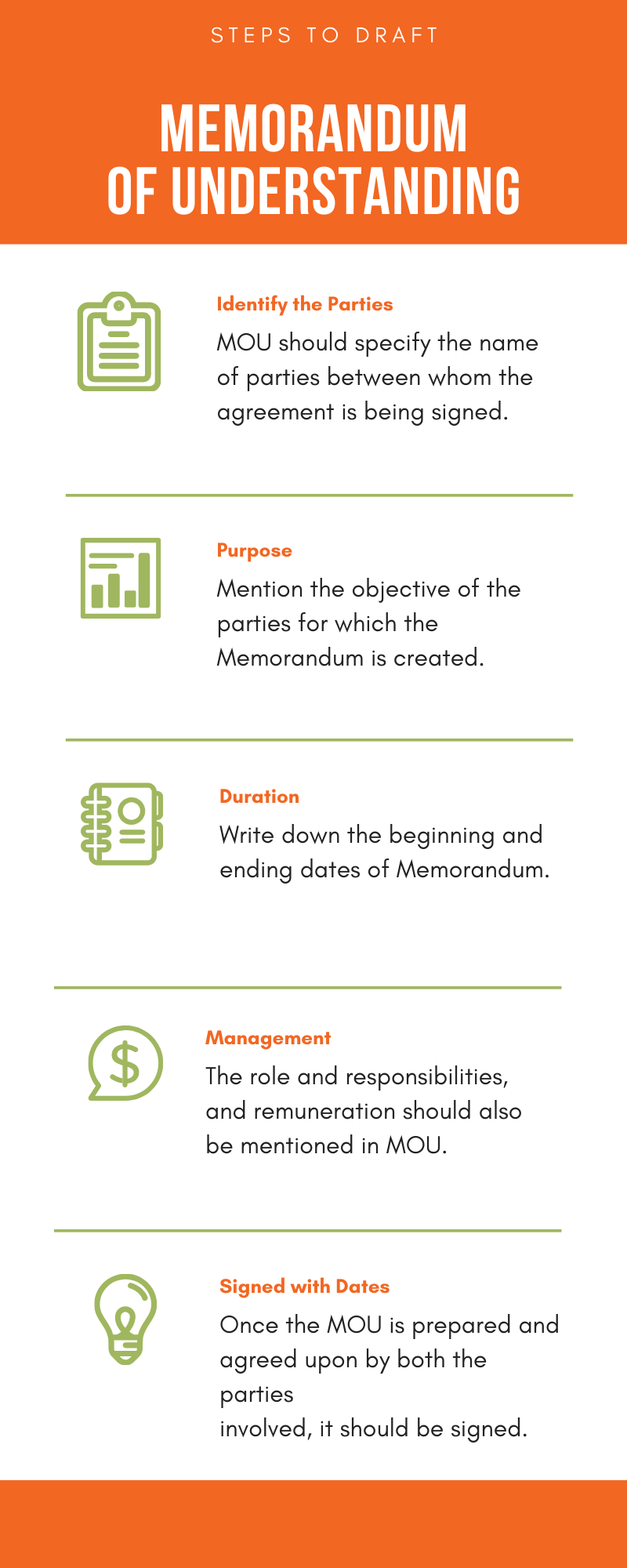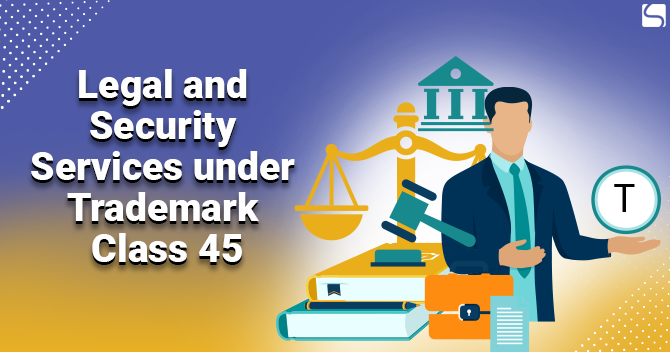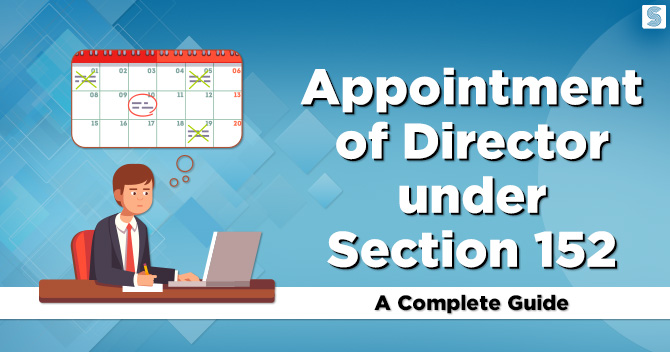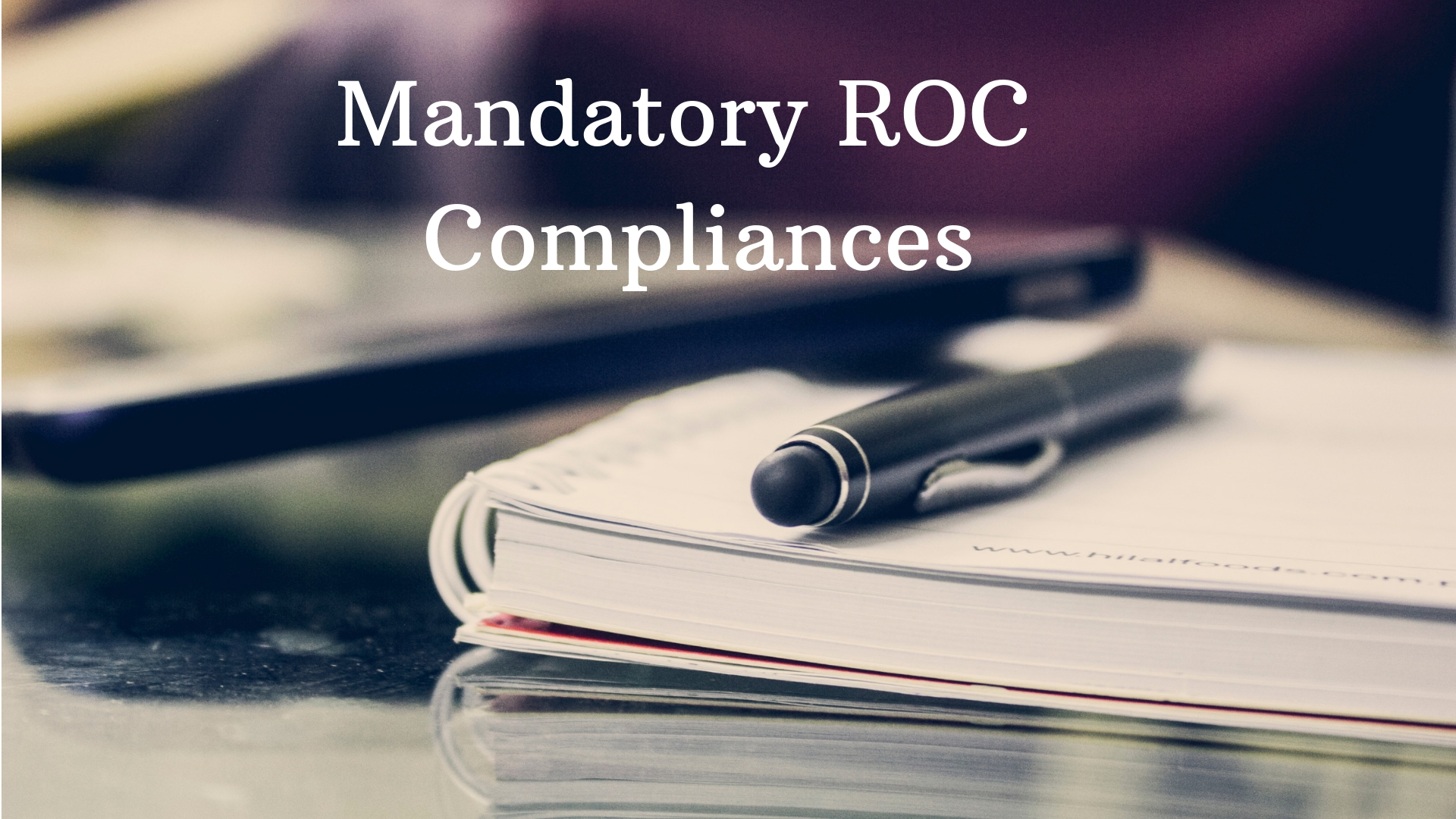A Comprehensive Guide to Draft a Memorandum of Understanding Agreement

Dashmeet Kaur | Updated: Feb 22, 2020 | Category: Compliance
Memorandum of Understanding is a formal document that outlines the expectations of two parties before sealing a deal. It is a non-commitment agreement that defines the intensions of businesses to work together in consensus. The Memorandum of Understanding Agreement highlights the rights & obligations of two corporate parties that are about to enter into a Deed. Being an efficient tool to determine the targets/objectives, MOU frames a course of action to achieve the same. If you also want to draft MOU for your business, then this write-up will be highly beneficial for you.
Table of Contents
Key Features of MOU
- MOU is a document that describes the mutual expectations of both the parties involved in a negotiation.
- It must formulate the name, purpose & other details of the parties who agree to sign the Memorandum.
- The Agreement should also specify the meetings plan that shall be scheduled after closing the deal.
- MOU must depict the individual capital contribution to be made by each party.
- To avoid any disagreements later, it is better to mention the person’s name in the MOU who will have authority to take major financial decisions.
- A Memorandum of Understanding document prescribes those individuals who will be responsible to handle day to day Company’s operations. Thus, it states the roles and remuneration of the concerned person.
- MOU creates the need for maintaining the financial records of the prospective assignment/program.
- Once both the parties agree upon the conditions of the MOU, it should be signed and dated by the authorized representatives of each party.
- The Memorandum must mention a valid duration of such an Agreement among the parties. Hence it should include the beginning and ending dates of MOU applicability. Moreover, it should notify about the circumstance under which the Memorandum will get terminated.
What is the importance of Memorandum of Understanding Agreement?
MOU plays a vital role in the formation of a Company. Here are some of the advantages of preparing a Memorandum:
- MOU creates a medium to generate funds for the Company as it gives a clear idea to the investors about the financial position, aims and future plans of the Company.
- It is indispensable to submit MOU Agreement during the incorporation of the Company since it specifies the conditions on which the Company is built.
- A Memorandum of Understanding contract helps to regulate and direct the Company towards its original objective. It defines the limits of operations and confines the Company to not function outside the prescribed limits.
- MOU further enables a Company to maintain a better relationship with its stakeholders by specifying the liabilities of each stakeholder.
- The Memorandum provides comprehensive details of the Managers, Promoters and other important persons associated with the Company.
Comparison between Letter of Intent and MOU
The table given below denotes the common differences that LOI shares with MOU:
|
Basis of Difference
|
Letter of Intent (LOI) |
Memorandum of Understanding (MOU) |
|
Nature of Parties |
In LOI, only two parties are involved. |
In MOU, two or more parties can be involved. |
|
Uses |
LOI is used to define the terms of an Agreement between the buyer and seller before finalizing the deal. |
MOU specifies the parameters under which the parties shall work in a Joint Venture or Partnership. |
|
Duration |
The Letter of Intent often gets converted into a contract. Thus, it sustains for a limited period. |
Memorandum of Understanding Agreement continues to stay in its original state until the completion of the prescribed task. |
|
Signatories |
LOI enlists the agreed terms and conditions among the parties, but it is only signed by the party that has forwarded the initial proposal. |
The actions and conditions prescribed in MOU are signed by all the parties involved in the Agreement. |
Steps to draft Memorandum of Understanding

Things to consider while drafting the Agreement of MOU
If you want to prepare a Memorandum of Understanding Agreement, incorporate the following aspects:
- Specify the overall intent: An ideal MOU starts with a brief description of the overall intent that the parties strive to achieve. It should state those clauses which accurately reflect the party’s purpose and ensures no ulterior motives.
- Roles and responsibility: There should be a separate section in MOU that describes the responsibilities and duties of the parties involved. It is prudent to define each party’s role along with his shared responsibility, if any. Generally, this section of the MOU is the most lengthy and detailed part as it is the sole purpose of the Agreement.
- Time period: It is utmost essential to mention time duration with the starting and ending dates when the MOU will come into effect since it does not exist for eternity.
- Disclaimer: The Memorandum of Understanding must have at least one or more disclaimer indicating that all the activities undertaken must comply with both Federal and State laws.
- Financial arrangement: There should be a segment in MOU, wherein the financial implications of both the parties are defined in detail. It should include the name of the entity that will pay for the items and to whom.
- Risk Management: Mishaps are inevitable in business. Therefore, it is important to have a provisional clause that specifies who will pay for the losses.
- Signatures: If one or more parties involved in the MOU Agreement are Companies, then all the members, including CEO, Departmental Chair, Directors and executives need to sign on behalf of the Corporation.
Conclusion
If you need professional assistance in framing the MOU of your next business venture, then consult Swarit Adv
Also, Read: Complete guide to winding up a Private Limited Company.














